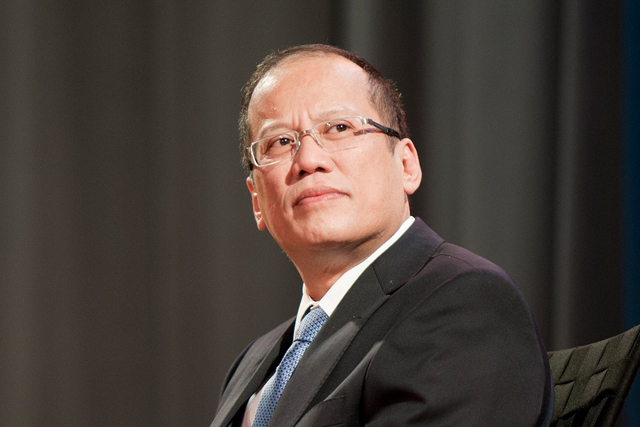Commentary: How did President Aquino stand up against China?

Filipinos remember the late President Benigno Simeon Aquino III as an honest, decent, private, and one of the most hardworking and effective Philippine presidents. His leadership style was characterized by subtlety, humility, credibility, and most importantly, respect for human rights and the rule of law.
Internationally, the Philippines, under the administration of President Aquino, was seen as the Asia-Pacific David standing up to the Chinese Goliath in the West Philippine Sea.
Early on, President Aquino attempted to curry favor from China. In late 2010, the Philippines joined a 19-state coalition led by China that did not send any representative to the awarding ceremony in Oslo, Norway for Chinese dissident and Nobel Peace Prize winner, Liu Xiaobo.
In March 2011, the Aquino administration pleaded with Chinese authorities to grant clemency to three Filipinos sentenced to death for drug-trafficking but were eventually. Unfortunately, President Aquino realized too late that appeasing China carried the risk of being singed by an emergent and assertive power.
On March 2, 2011, the diplomatic friction evolved into a serious geopolitical conflict when the Chinese embassy outrightly brushed aside the first Philippine diplomatic protest that the Aquino administration fired off immediately after two Chinese patrol boats vexed a survey ship authorized by the Philippine Department of Energy.
The Philippine ship was conducting gas exploration in the Recto Bank (Reed Bank) within the Philippine Exclusive Economic Zone (EEZ). The Chinese Embassy in Manila argued that China has territorial jurisdiction over the so-called Nansha Islands and the nearby territory, conjointly referred to as the Spratlys.
The eye opener: The Scarborough Shoal stand-off
The other altercation in the disputed waters, and again within the Philippine EEZ, was the attempt of the Philippine Navy (PN) to arrest Chinese fishermen who were hauling corals, clams and live sharks in the Scarborough Shoal area. However, the arrest was botched when two Chinese maritime surveillance vessels intervened which sparked a two-month stand-off from April 9 to June 18, 2012, between the PN’s BRP Gregorio del Pilar and the Chinese fishing vessels.
Arranged by the US, the stalemate was resolved with China and the Philippines amicably removing their respective vessels in the area. However, betraying the agreement the Chinese repositioned its maritime militia vessels to cordon the shoal blocking Philippine access to protect their fishing boats within the Philippine EEZ.
Challenging the Chinese Goliath
In April 2012, the Philippines prompted the Association of Southeast Asian Nations (ASEAN) to support its proposal of establishing a “Zone of Peace, Freedom, Friendship, and Cooperation.” This diplomatic action aimed to delineate the maritime boundary claims of littoral states in the South China Sea. However, the South China Sea dispute was not included in the agenda.
Dissatisfied with ASEAN’s disappointing response to its modest proposal, the Philippines decided to enhance its security ties with the United States—the country’s long-time strategic ally--and to foster a security partnership with Japan.
In mid-June 2011, the Aquino administration publicly acknowledged the exigency of U.S. diplomatic and military support. Aware of its military limitations, Manila has asked for an unequivocal U.S. commitment to Philippine defense, and security as provided for in the 1951 Mutual Defense Treaty, specifically American naval/air support for Philippine forces based in the Spratlys.
The Aquino administration also forged closer security relations with Japan, another U.S. ally and China’s rival in East Asia. Former Prime Minister Shinzo Abe committed to provide 10 patrol boats to enable the Philippine Coast Guard (PCG) to safeguard the Philippines’ maritime territory.
President Aquino then endorsed Prime Minister Abe’s move to reinterpret the 1947 Japanese Constitution allowing the Japanese Self-Defense Force to assist allies like the U.S. and possibly, the Philippines in case of an armed confrontation with China in the South China Sea.
The Philippines also challenged China to bring the dispute for arbitration by the United Nations Convention on the Law of the Sea (UNCLOS). China rejected Manila’s plan to resolve the issue before the arbitral tribunal of the UNCLOS insisting that the dispute be settled through diplomacy and bilateral negotiations.
In filing the arbitration case against China, the Philippines sought a multilateral and legal solution to the maritime dispute in which the interests of the international society are at stake.
On July 12, 2016, the arbitral tribunal delivered its long-awaited ruling on the protracted and tense maritime dispute between the Philippines and China. Remarkably, the tribunal ruled in favor of the Philippines in 14 of its 15 claims against China’s expansive territorial claims in the South China Sea. The court declared that China’s so called “nine-dash line” defy and violate international law.
President Aquino’s crowning achievement
The world will remember President Aquino for his courage in standing up against an Asian Goliath, and for his crowning achievements of obtaining an important legal victory from the arbitral tribunal that rejected China’s nine-dash line claim in the South China Sea.
President Aquino showed the world how courage, confidence, decisive, and principled foreign policy actions can enable international law to prevail over raw power and might in the 21st century global society.
Renato de Castro is a trustee and convenor of the National Security and East Asian Affairs Program of think tank Stratbase ADR Institute.
- Latest





























